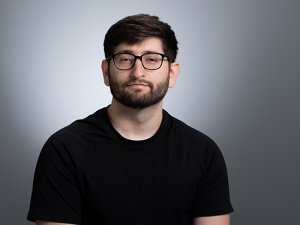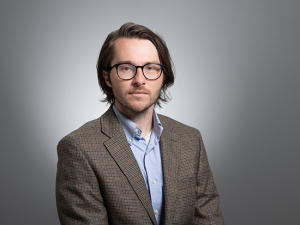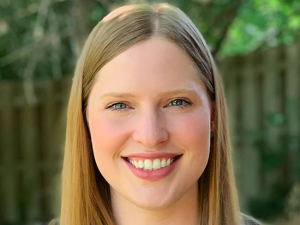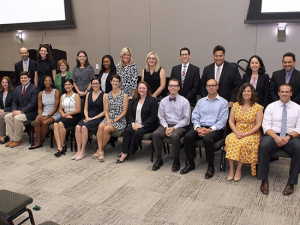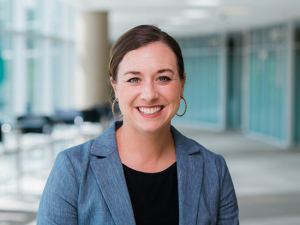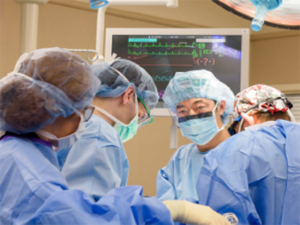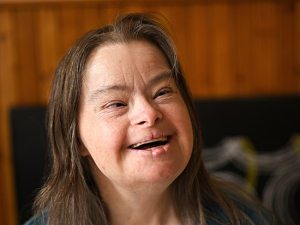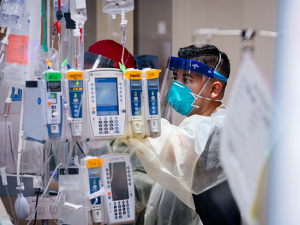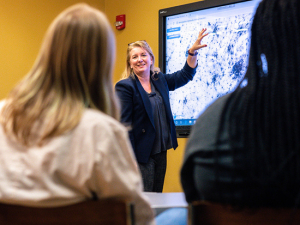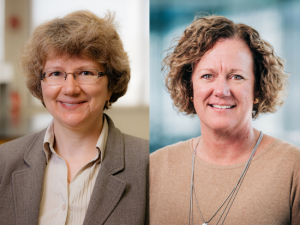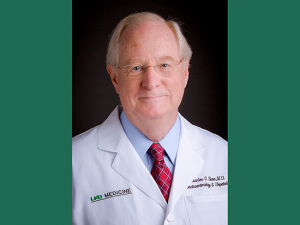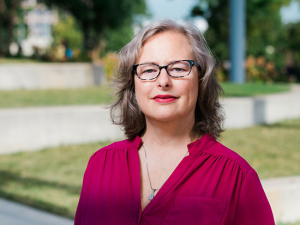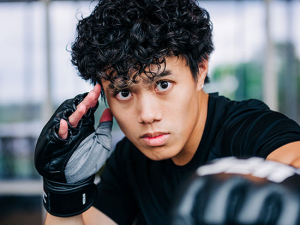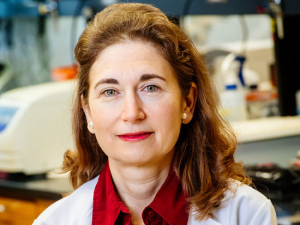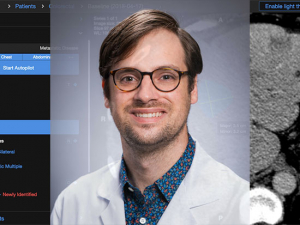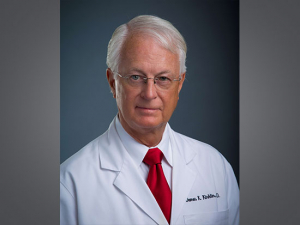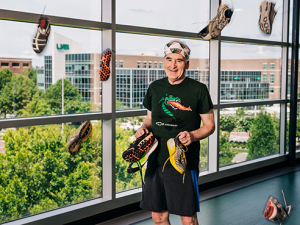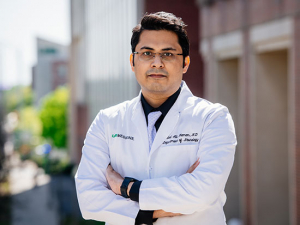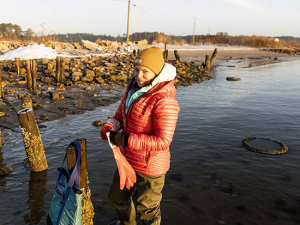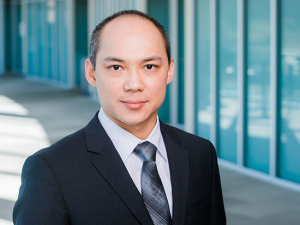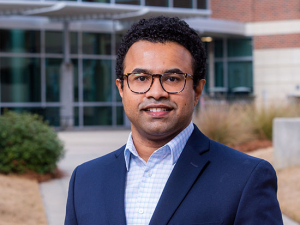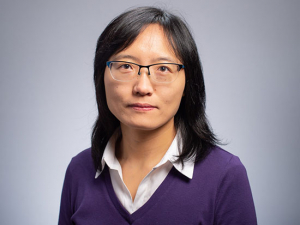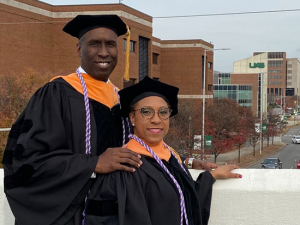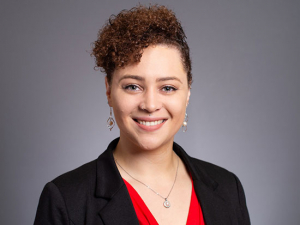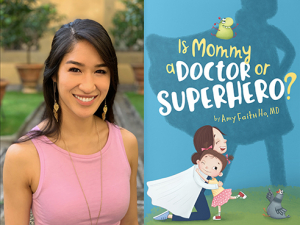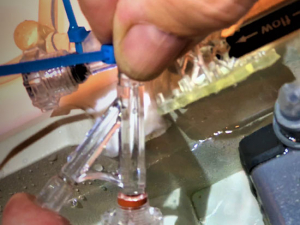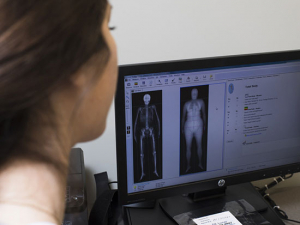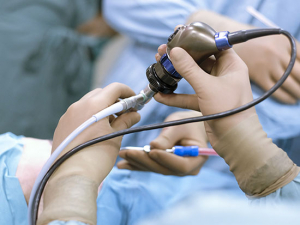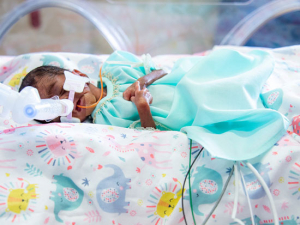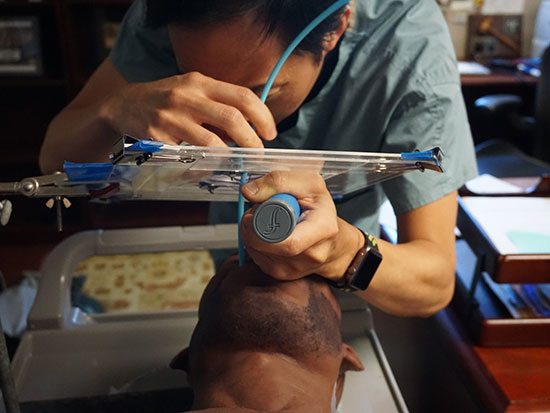 A prototype of the transparent barrier to shield care providers from exposure to aerosolized droplets while they are performing intubations undergoes testing.This summer, UAB’s Harbert Institute for Innovation and Entrepreneurship awarded more than $300,000 to faculty and staff with ideas for new products and processes that needed proof-of-concept or early-stage product development support to reach their commercialization potential. Eleven projects received funding of $10,000 to $50,000, made possible by the Regional Innovation Strategies program of the U.S. Economic Development Administration.
A prototype of the transparent barrier to shield care providers from exposure to aerosolized droplets while they are performing intubations undergoes testing.This summer, UAB’s Harbert Institute for Innovation and Entrepreneurship awarded more than $300,000 to faculty and staff with ideas for new products and processes that needed proof-of-concept or early-stage product development support to reach their commercialization potential. Eleven projects received funding of $10,000 to $50,000, made possible by the Regional Innovation Strategies program of the U.S. Economic Development Administration.
What are these projects, and who are the inventors behind them? The Reporter met with several grant recipients to learn more about their ideas and their advice to colleagues considering commercialization opportunities of their own.
This week’s project is Patient-Directed Intervention to Decrease Exposure to Aerosolized Particles, led by professors Gregory Kennedy, M.D., Ph.D., division director of Gastrointestinal Surgery, and Jack Rogers, Ph.D., graduate program director in the UAB Department of Biomedical Engineering.
Kennedy and Rogers are developing a transparent barrier that shields care providers from exposure to aerosolized droplets while they are performing intubations or other procedures on patients who might be infected with airborne pathogens, such as SARS-CoV-2, the virus that causes COVID-19.
The team has developed two prototypes, a portable attachment for a face shield and a shield mounted to an articulating arm. Grant funding will support further testing of the prototypes.
How did you develop this idea?
“It’s a little bizarre, actually. I’m a surgeon, not an anesthesiologist [the specialty that performs intubations most commonly],” Kennedy said. “But my daughter is an industrial design major at Auburn and she was at home during the start of the COVID-19 pandemic. One of her assignments was to consider a new type of idea that would be helpful for the coronavirus problem. I threw this idea out there — most PPE goes on the provider, not the patient. We talked about what it could look like, she started sketching and I said, ‘This looks cool.’ So we went to Jack Rogers and he agreed and said, ‘Let’s make it.’
| “I threw this idea out there — most PPE goes on the provider, not the patient. We talked about what it could look like, she started sketching and I said, ‘This looks cool.’ So we went to Jack Rogers and he agreed and said, ‘Let’s make it.’” |
“Our concept is a transparent barrier that includes a port for insertion of devices such as intubating stylets and endotracheal tubes. It allows for manipulation of the airway while shielding the care provider.”
What problem does your project solve? Are there any similar solutions on the market?
“Performing life-saving procedures such as intubation can present health risks for the care provider. Nothing like this is available. Some people have used big plastic boxes that they put over patients to intubate, with head and arm holes. The problem is that it’s not mobile. How are you going to use that in an ambulance? Our project is designed to be mobile and not cumbersome.
“The other application for our device would be airway surgery. I think ultimately you would be able to operate through this for high-risk airway surgeries — such as laryngeal papillomas — for a decreased risk of infection.”
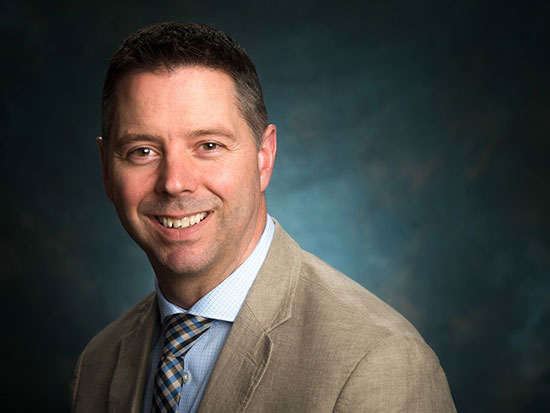 Gregory Kennedy, M.D., Ph.D.
Gregory Kennedy, M.D., Ph.D.
What factors convinced you to move forward into commercialization?
“I have a few other patents, so I’m always going to look into a patent for a new idea. I have a Ph.D. in cancer biology and in my graduate work we patented a plasmid for DNA for introduction into cells and that has been sold. It generates a modest amount every year.”
Is this the first time you have worked with the Harbert Institute?
“I have a patent through the Harbert Institute for a surgical stapler for intraluminal colon resections. We worked with engineers at Southern Research and met with a company, but ultimately the engineers told us the idea wasn’t mechanically feasible.”
So do you consider yourself an entrepreneur?
“Not at all. I’m an egghead professor — I can’t imagine starting my own company.”
Do you have any advice for others in the UAB community who may have an innovative or entrepreneurial project in mind?
“Always look for simple problems in your own life and think about how you might address them with some unique ideas. It doesn't have to be very elaborate, but you have to collaborate. Our biomedical engineers are really intelligent, creative people. You take them a problem and they’ll tell you five or six different ways you could solve it. As a clinician you can say, ‘These four wouldn't work, but these two really could.’ You can find some very interesting solutions if you collaborate with others."
